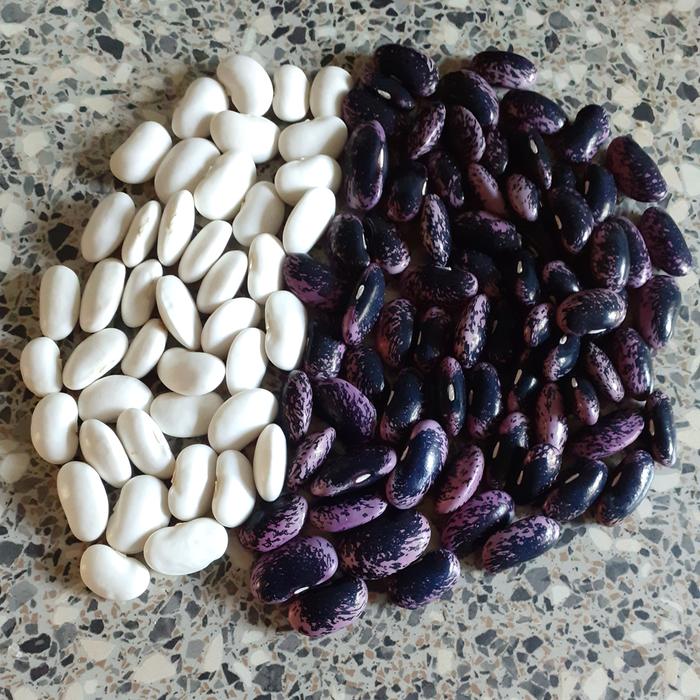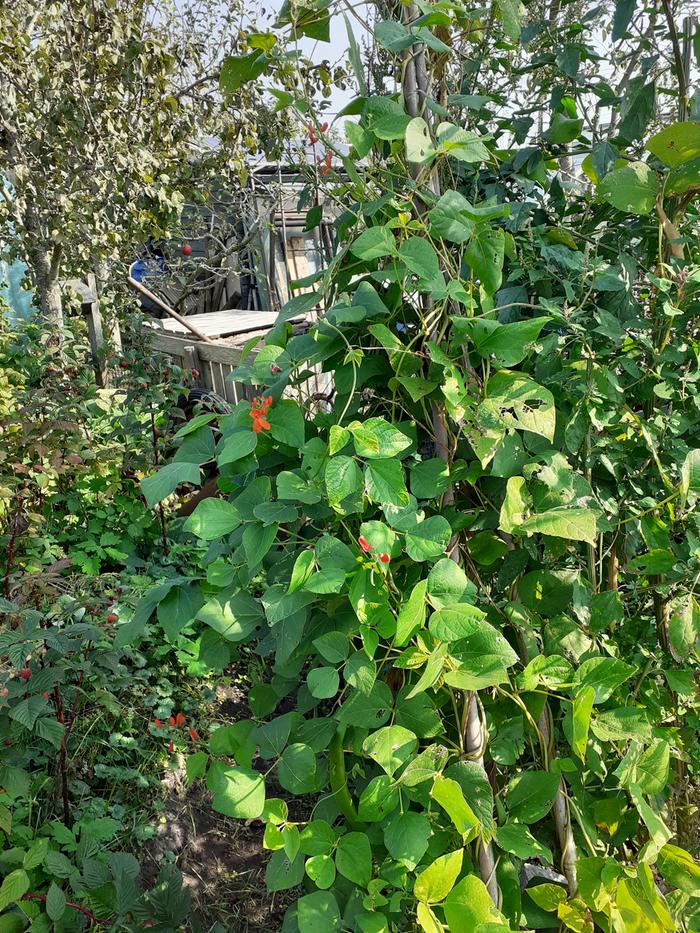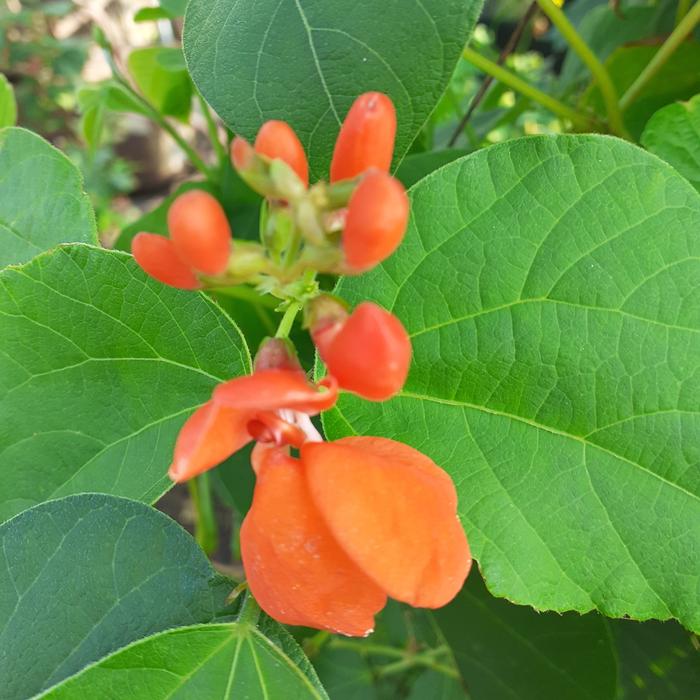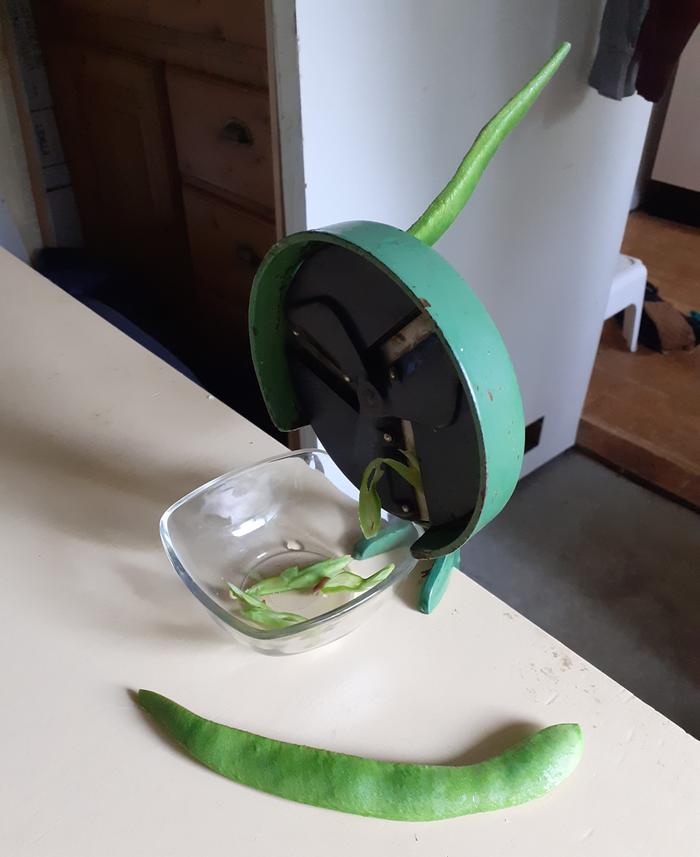
 2
2





 14
14




![Filename: beans-common-X-runner_640a.jpg
Description: F1 hybrids between common beans and runner beans. Cotyledons at about ground level. [Thumbnail for beans-common-X-runner_640a.jpg]](/t/101517/a/71098/beans-common-X-runner_640a.jpg)
![Filename: bean-interspecies-crossing-attempts_640a.jpg
Description: Common beans, that self pollinated even though manual cross pollination was attempted. [Thumbnail for bean-interspecies-crossing-attempts_640a.jpg]](/t/101517/a/71099/bean-interspecies-crossing-attempts_640a.jpg)




Joseph Lofthouse wrote:I'm growing interspecies hybrids between common beans and runner beans. I believe that the cross only works if the common bean is the mother, and the runner bean is the pollen donor. You can tell if attempts at crossing were successful in a number of ways... The cotyledons of runner beans stay below ground. The cotyledons of common beans are high in the air. The cotyledons of F1 hybrids are approximately at ground level. (photos below). Another way to tell, is that if scarlet flowers show up in the common bean patch, it may be because of cross pollination. Naturally occurring crosses are more likely if the two species are planted closely together. Also, if only bush beans are grown next to runner beans, and vines show up in the bush beans, they may be from a naturally occurring cross. In the F1, runner bean traits were dominant for seed coat color, flower color, and pod type.

 4
4




 2
2





 4
4




Rachel Stark wrote: I wanted to ask you if the F1 hybrids from such a cross are more heat and humidity resistant than the common bean parent?
 2
2









Ethan Nielsen wrote:How were the beans from your F1 cross? Did they produce well in Utah? Did you save any seeds? (asking for a friend...)
 2
2








 2
2




Western Montana gardener and botanist in zone 6a according to 2012 zone update.
Gardening on lakebed sediments with 7 inch silty clay loam topsoil, 7 inch clay accumulation layer underneath, have added sand in places.
 3
3





 4
4




 2
2




Moderator, Treatment Free Beekeepers group on Facebook.
https://www.facebook.com/groups/treatmentfreebeekeepers/





 1
1




 2
2




Nothing ruins a neighborhood like paved roads and water lines.

 2
2








 2
2




 1
1








Two years ago, I protected my runner beans with straw to see if I could get them to overwinter (we're on the edge, but supposedly 7). The ones that made it and actually produced, I saved seed from. This year I planted that seed, so now you will have to wait in anticipation to see if I have any better luck having them survive overwinter than the first group. Our winters can be quite different, and the ground can get incredibly wet, so I may also need to try in a different location on my property, but the spot I chose has raspberries nearby that can help as a wind-break.C. West wrote:im interested to know if they are perennial like scarlet or annual like commons... also if hybrid vigor/cold hardy common genetics would make them not only perennial but perennial in zones 4-6 rather than just 7+
Visit Redhawk's soil series: https://permies.com/wiki/redhawk-soil
How permies.com works: https://permies.com/wiki/34193/permies-works-links-threads




Yes, beans are deer-magnets and I wouldn't even try growing them without protection in my eco-system! Fairly decent protection in fact. My local deer *really*, *really* like beans, so the trick of planting squash around the beans doesn't work here.Jonathon Hornock: The local deer are pretty interested in any bean I have planted. Just when they start to stretch and fill out, Chomp! and I’m left with some stalks ripped from the ground, or more kindly just chewed down to the ground. This could take a while..
Visit Redhawk's soil series: https://permies.com/wiki/redhawk-soil
How permies.com works: https://permies.com/wiki/34193/permies-works-links-threads
 1
1




In the south when the wind gets to 75 mph they give it a name and call it a hurricane. Here we call it a mite windy...








 1
1




Jonathon Hornock wrote:I think I heard there are like 70 species of phaseolus. What about tepary or Lima? Do you think common beans would cross with those as well?








Myco Eye wrote:I think I accidentally did this. And found this thread by googling what I had done.
I planted Scarlet runner beans maybe a month before in April and then a month later I planted Kentucky pole beans in between the sprouting scarlet runner beans. The beans that formed off the Kentucky pole beans have pods and beans that are striated with purple like the seed pod of the Scarlet Runner Bean. I was confused as to how this was the Kentucky Pole Bean. Not exactly sure how nature made it happen but the pods are striated green and purple, size and taste of Kentucky pole beans.
"Also, just as you want men to do to you, do the same way to them" (Luke 6:31)














"Also, just as you want men to do to you, do the same way to them" (Luke 6:31)

|
Oh the stink of it! Smell my tiny ad!
rocket mass heater risers: materials and design eBook
https://permies.com/w/risers-ebook
|



